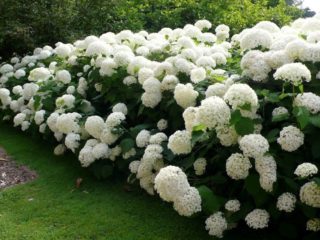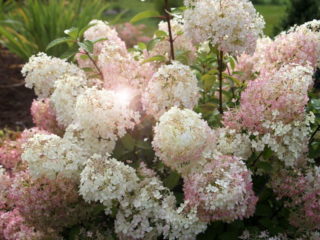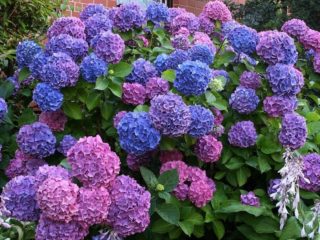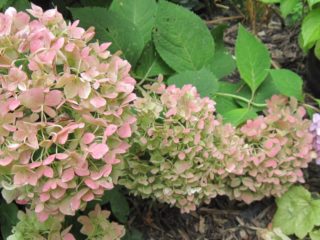Content
Hydrangea chlorosis is a plant disease that occurs due to disruption of internal metabolic processes, as a result of which the formation of chlorophyll in the leaves is inhibited. Their color changes to yellow; only the veins retain the green color. The cause of chlorosis is iron deficiency. There may be either too little of it in the soil around the plant, or the hydrangea itself is not able to absorb it. In any case, treatment of the disease is necessary; it will not go away on its own. Usually it is enough to simply feed the bush with iron for the problem to go away.
The danger of leaf chlorosis in hydrangea
A plant whose leaves do not have enough chlorophyll is not able to fully provide itself with the carbohydrates necessary for its nutrition. This leads to inhibition of the growth and development of the bush. It begins to fade, lose its shape and beauty. Ultimately, if the necessary measures are not taken, the hydrangea may die.
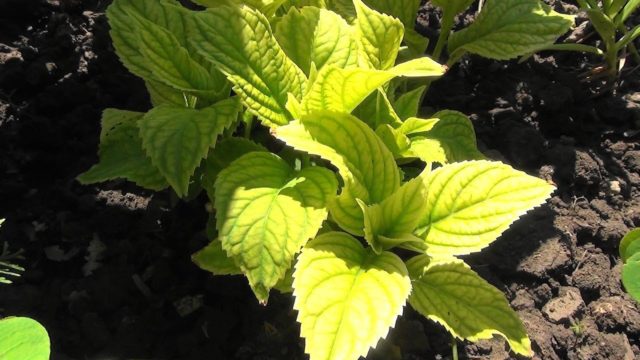
The appearance of the disease is global; localized yellowing of foliage is rarely observed.
In some cases, the color change from day to day is unnoticeable.It is recommended to look at the hydrangea from time to time and compare its appearance with neighboring plants.
Signs of chlorosis in hydrangea
Symptoms of chlorosis in large-leaved hydrangea (as well as its other varieties) manifest themselves not only in yellowing of the foliage. In addition, the following signs of illness are possible:
- reduction of leaves in size;
- their withering or curling, other changes in shape;
- falling of leaves and flowers;
- changing the shape of the buds;
- drying of shoots at the growth cone;
- stopping the development of the root system;
- partial or complete death of roots.
Usually several symptoms are observed at once, since the lack of hydrocarbons that nourish the plant affects all its parts almost simultaneously.
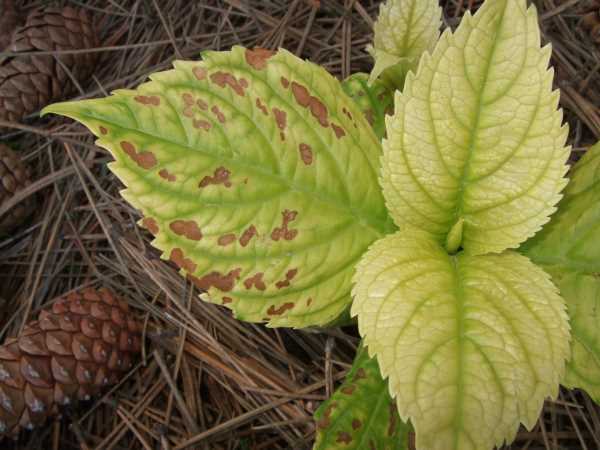
Advanced stage of chlorosis - areas of leaf tissue dying are noticeable
Causes of chlorosis in hydrangea
The main cause of the disease is the lack of sufficient iron in the plant, which is necessary for the formation of chloroplasts. This may be a consequence of two phenomena:
- lack of iron compounds in the soil;
- inability of the plant to absorb iron, metabolic disorder.
And if with the first case everything is relatively simple, and the reason lies in the poverty of the soil or substrate used for growing hydrangea, then the second is much more complicated and figuring out what caused this violation is problematic.
For example, in the spring, metabolic disorders may occur due to temperature differences between day and night. The rate of chemical processes in roots located in cold soil and leaves warmed by the sun will differ significantly.That is, the root system simply will not cope with the absorption of the required amount of iron from the soil.
This will lead to the fact that there will not be enough chlorophyll in the chloroplasts, and they will begin to perform their function worse. The synthesis of carbohydrates will be significantly reduced, and the leaves will change color to yellow due to an insufficient amount of green pigment.
Because hydrangeas require soil with a pH of around 5.5 and water that is neutral in acidity, even regular watering will increase the pH. Sooner or later, this will lead to the absorption of iron from the soil significantly slowing down.
How to treat chlorosis in hydrangea
Iron-containing preparations are used to treat hydrangea paniculata chlorosis. Modern industry offers a number of similar products: Ferrovit, Antichlorosis, Micro-Fe, etc.
Mostly in such preparations, iron is used in chelated form - in the form of a claw-shaped complex compound used to introduce microelements into the metabolic process.
In addition, hydrangea chlorosis is treated with preparations based on iron sulfate. You can make this composition yourself:
- Dissolve 8 g of citric acid in one liter of water;
- add 2.5 g of iron sulfate to the mixture;
- to stir thoroughly.
It will be a liquid with an orange tint. The resulting composition is sprayed on the leaves of damaged plants. It can be stored in the refrigerator for two weeks.

Components for preparing an anti-chlorosis product can be purchased in special stores
There is also another version of the mixture for the treatment of chlorosis.To obtain it, 10 g of iron sulfate and 20 g of ascorbic acid are dissolved in one liter of water. The method of use and shelf life of this product are similar to those discussed earlier.
How to cure hydrangea chlorosis
In general, treatment of hydrangea for chlorosis consists of several stages and includes the following:
- Replacing the soil or substrate in which the plant is planted. Since hydrangea is quite unpretentious and tenacious, the cause of chlorosis most likely lies in the lack of iron. Regular application will, of course, help, but you cannot fertilize the plant with iron constantly. Therefore, you will have to replace the soil in the area where the hydrangea is planted or completely renew the substrate in the pot.
- Watering with acidified water. Alkalinization of the soil negatively affects the ability of the hydrangea root system to absorb iron. Therefore, it is necessary to regularly either irrigate with acidified water or use fertilizers that increase acidity (peat, manure, etc.)
- Using iron-containing special products to spray the plant. The drugs discussed earlier should be used even after the substrate has been replaced. This is necessary to quickly satisfy the plant's need for iron.

Replacing the substrate of hydrangea growing in the garden is the first step to solving the problem of chlorosis
It should be remembered that the foliar method of fertilization is still more effective. When sprayed, the plant completely restores its iron balance within 24 hours, and with root feeding - within 72 hours.
Disease prevention
As noted earlier, one of the reasons for the low digestibility of iron is the reduced acidity of the soil. To solve this problem, you should acidify the soil from time to time. The easiest way to use citric acid for this purpose. You will need very little of it - a few grains are dissolved in 1 liter of water and the plants are watered with this mixture.
There is another way to prevent chlorosis; it involves burying small rusty metal objects in the garden where hydrangea grows - bolts, screws, nails, etc. You can also scrape off rust from large surfaces and mix it with the soil under the plants.
Conclusion
Hydrangea chlorosis is a disease characterized by a deficiency of iron in plant cells. Its external manifestations are reduced to yellowing of the leaves followed by their falling off. Lack of iron leads to a decrease in chlorophyll in the plant, which affects the deterioration of its nutrition, wilting and further death. Treatment of chlorosis, mainly consisting of feeding hydrangea with iron, should begin as early as possible so that the plant does not die.
